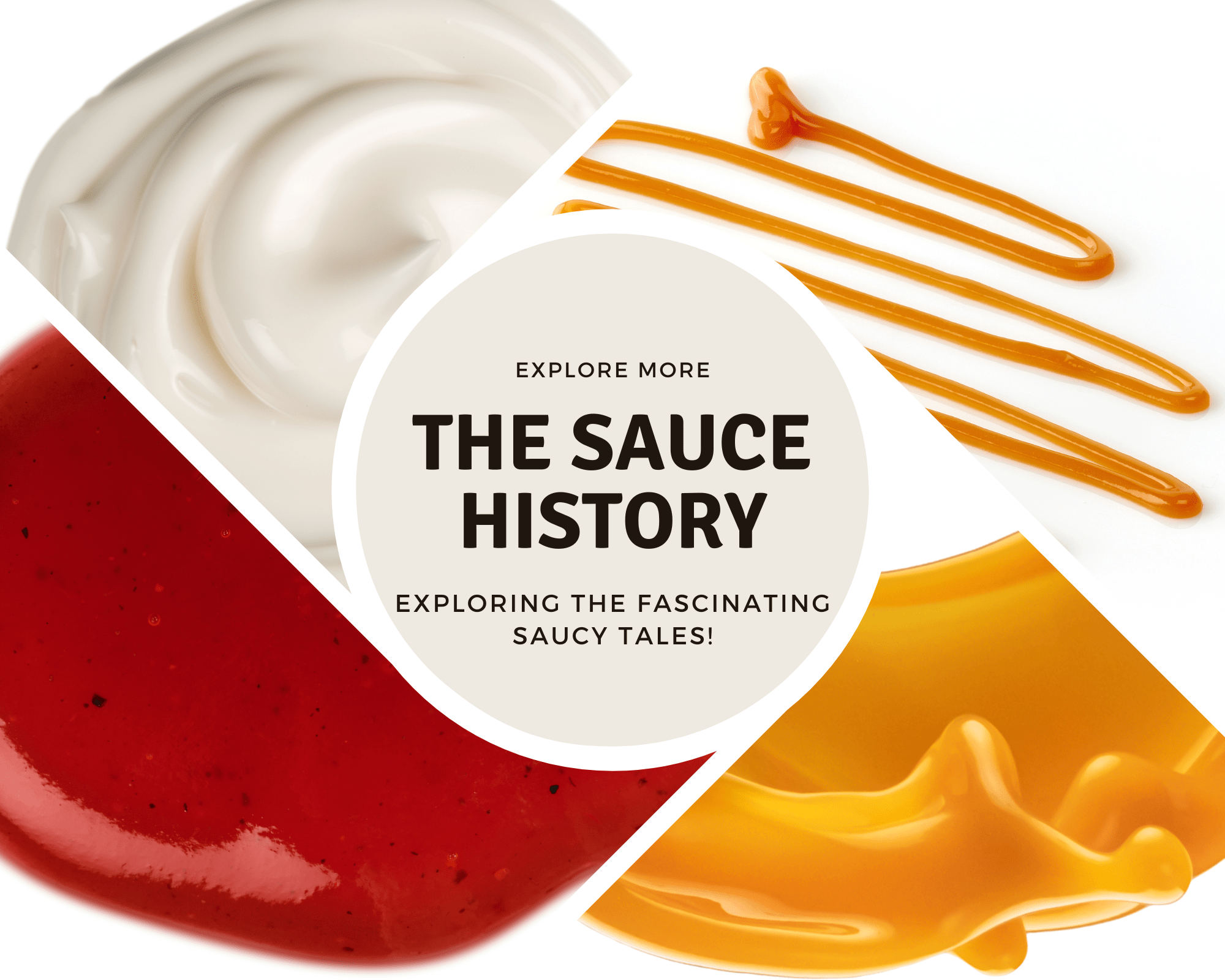
The Sauce History | Exploring the fascinating Saucy Tales!
The Sauce History | Exploring the fascinating Saucy Tales!
Introduction:
Curious about sauce history? Wondered about their origins and original usage countries? If you answered yes, you’ve come to the correct place. Reading the entire article will provide answers to all of your questions. Explore sauce’s rich history, diverse flavors, and captivating tales that have shaped culinary landscapes.
Transforming everyday meals to culinary art across history, from Renaissance Europe to ancient Mesopotamia and Egypt. A tapestry of tastes, methods, and cultural influences has crossed continents while adapting and developing the history of sauces.
Origin:
The origins of sauces—those decadent toppings that enhance the flavors of our favorite foods—have a multitude of factors that contribute to their existence and evolution. One essential factor is the ingenuity and creativity of early human civilizations, who first recognized the transformative power of mixing ingredients to produce a mellow fusion of flavors.
Another critical factor that contributed to the evolution of sauces is the cultural exchange and trade between different regions. As societies interacted and exchanged goods and ideas, they shared their culinary traditions and ingredients, leading to the fusion of diverse flavors and the creation of new sauce recipes.
In addition to this, the availability of certain ingredients in specific regions played a significant role in shaping the types of sauces that emerged. Regions blessed with abundant herbs, spices, or fruits naturally incorporated these resources into their culinary practices, thereby giving rise to unique and region-specific sauces.
they were an essential part of the cuisine of Mesopotamia, one of the earliest civilizations ever recorded. They utilized sauces to give their meals richness and depth because they thought they had magical abilities. From there, the skill of producing sauces expanded to ancient Egypt, Greece, and Rome, with each culture contributing its distinctive spin to the sauces’ repertoire.
Modifications:
The emergence of feudalism and the creation of aristocratic courts during the Middle Ages improved sauce production. Particularly French cuisine made substantial contributions to the evolution of sauces, with famed chef Marie-Antoine Carême laying the groundwork for what is now referred to as the “mother sauces.”
During the Renaissance, trade, and adventure increased, bringing new foodstuffs and spices to Europe and expanding sauce-making options. At that time sauces that blended many flavors from all over the world became increasingly sophisticated and unique.
These sauces are still changing and innovating, reflecting the confluence of different culinary cultures around the world. The evolution of sauces is a monument to the brilliance and inventiveness of chefs and cooks throughout history, from traditional classics like bechamel and hollandaise to contemporary inventions like fusion and molecular gastronomy-inspired sauces.
Why was sauce Invented?
The development of sauce can be credited to several elements that have influenced its function and importance throughout sauce history.
1. To improve the flavor and palatability of food:
Sauces were initially developed as a way to improve the flavor and palatability of food. Early humans learned that blending various substances, such as herbs, spices, and liquids, might result in a mellow blend that improved the flavor of their food.
2. To preserve and tenderize food:
Sauces have useful functions including food preservation and tenderization. Before the invention of modern cooking methods and refrigeration, sauces were employed to cover up the flavor of less fresh or rotting components, extending the shelf life of those foods. In addition, sauces offered a way to soften and moisten food, making it more palatable.
3. Cultural influences and regional customs:
The development of sauces was influenced by regional customs as well as cultural influences. Globally, diverse sauces exist due to distinct flavor profiles and cooking techniques from different civilizations. Regional variations make sauces essential to culinary identity, adding depth and complexity to traditional dishes.
4. To add class and elegance:
Sauces were used to denote class and elegance. Aristocratic courts showcased their wealth and culinary expertise using extensive and intricate sauces. Professional chefs’ dedication turned sauce-making into an art form, producing sophisticated and tasty mixtures.
Today, sauces continue to evolve, reflecting the dynamic culinary landscape and the quest for exciting and unique flavors. The evolution of sauces elevates culinary joy, celebrates diversity, and broadens gastronomic possibilities.
Best Sauces:
The rich and adaptable bechamel sauce is one of the legendary sauces. The 17th-century French nobles’ kitchens marked the origin of this common ingredient. Silky white sauce: the base for classic dishes like lasagna, macaroni and cheese, and gratins, influencing the gastronomic industry.
The distinctive and colorful Ariannaise ketchup-mayo sauce is another unusual sauce that will catch your attention. Popular for burgers, sandwiches, and fries, this side is a go-to with its tangy ketchup and creamy mayo combo.. We’ll delve into its history, culinary prowess, and hear from those who’ve savored its seductive flavor.
Conclusion:
Learning about the intriguing sauce of history leads us on a journey through history, culture, and creativity. Sauces, dating back to Mesopotamia, Egypt, and Renaissance Europe, have transformed meals from ordinary to spectacular. Explore sauce history to understand chefs’ artistry and ingenuity. The development of sauces has improved our ability to enjoy food while also highlighting cultural diversity and opening new horizons. Lets enjoy the savories together and explore the fascinating world of sauces


